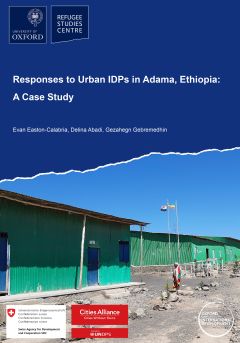Responses to Urban IDPs in Adama, Ethiopia: A Case Study
Evan Easton-Calabria, Delina Abadi, Gezahegn Gebremedhin

In this report we highlight successful humanitarian and development responses to internally displaced people (IDPs), as well as long-term development challenges, based on research in Adama, Ethiopia, a growing city in the Oromia region close to Addis Ababa. We present findings from a little-known case of IDP relocation and resettlement to Adama, which received and settled IDPs from camps in 2018. Over 1300 registered households as well as many unregistered IDPs fled ethnic conflict in the Somali region of Ethiopia to seek safety in Adama, a city approximately 100km southeast of Addis Ababa. The IDPs, who were mainly ethnic Oromo, arrived in Adama over the course of several months. The sudden and huge influx of IDPs put immense pressure on the city’s capacity to provide the necessary support. Significant lessons can be learned from Adama’s response. In the absence of large-scale international assistance, a little-known campaign to address the needs of IDPs led to a multi-level response from federal, regional and – in particular – local urban actors. This response may be a unique instance of an entirely Ethiopian, collective and largely local effort to operate successfully at this scale and within such a short period of time. At the same time it illustrates longstanding development challenges facing both IDPs and the cities that host them, including to employment and social integration. This case study is particularly significant because increasing numbers of forced migrants move not to capital cities, but instead to secondary cities such as Adama, which often lack the resources to accommodate and integrate them.
